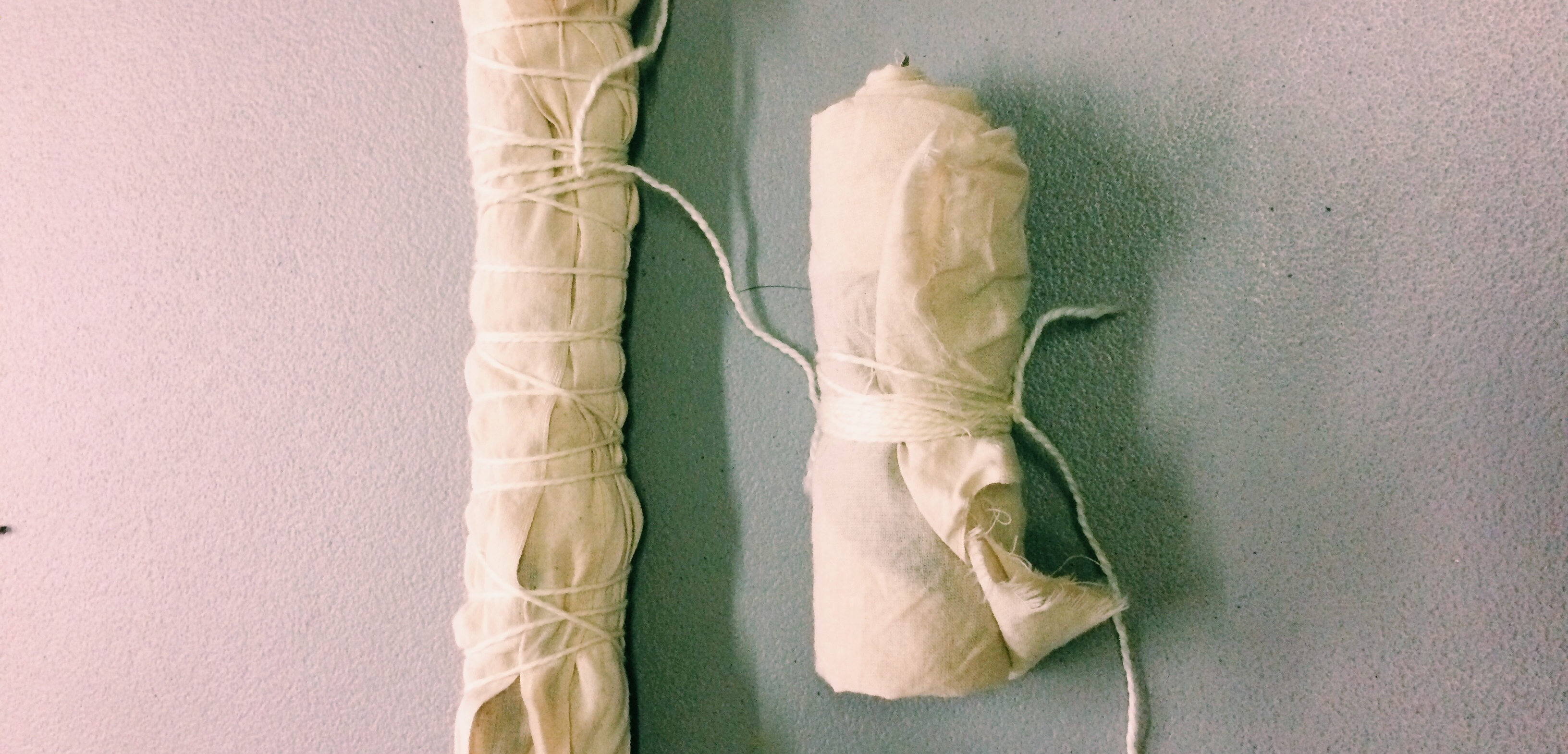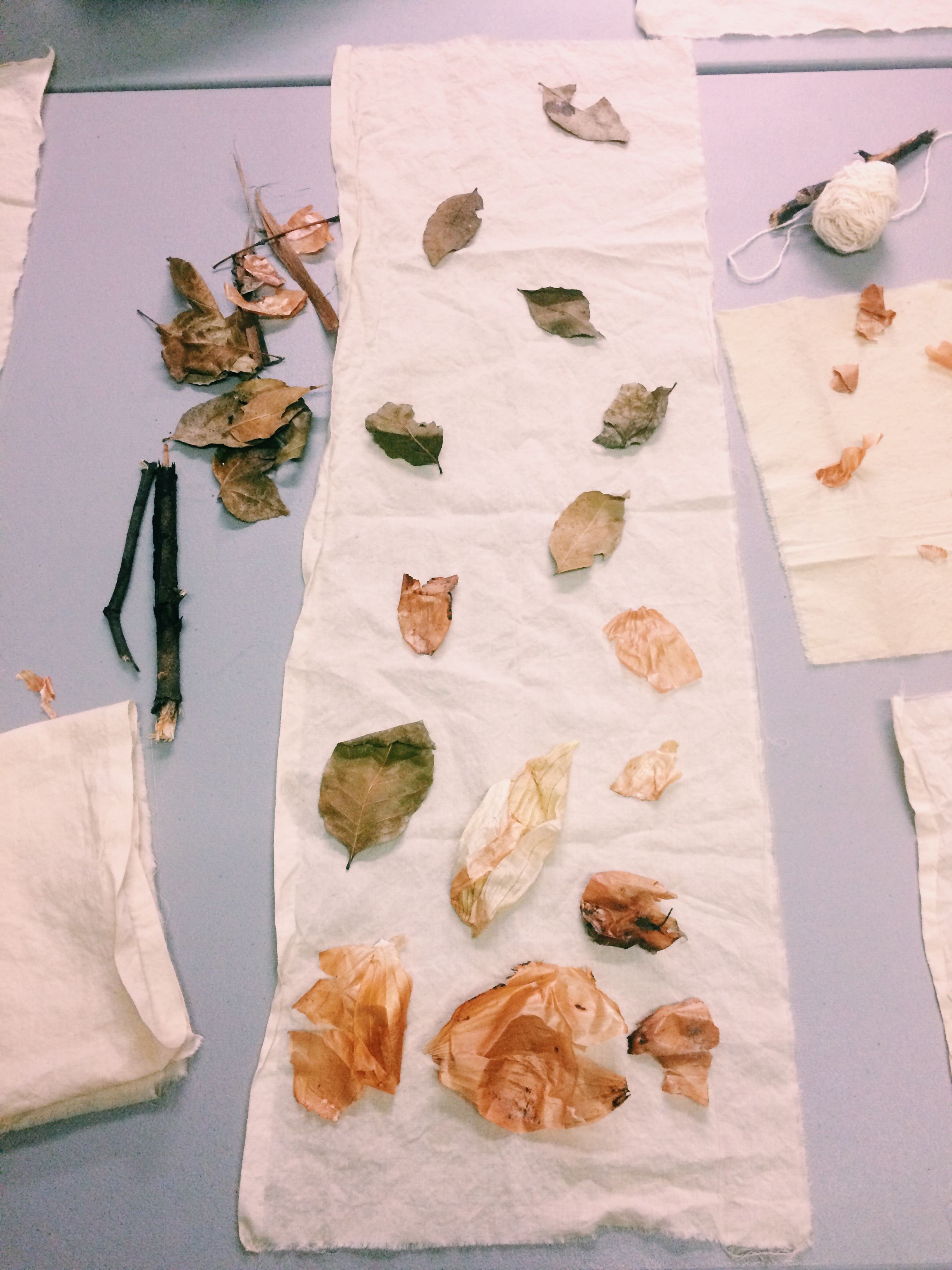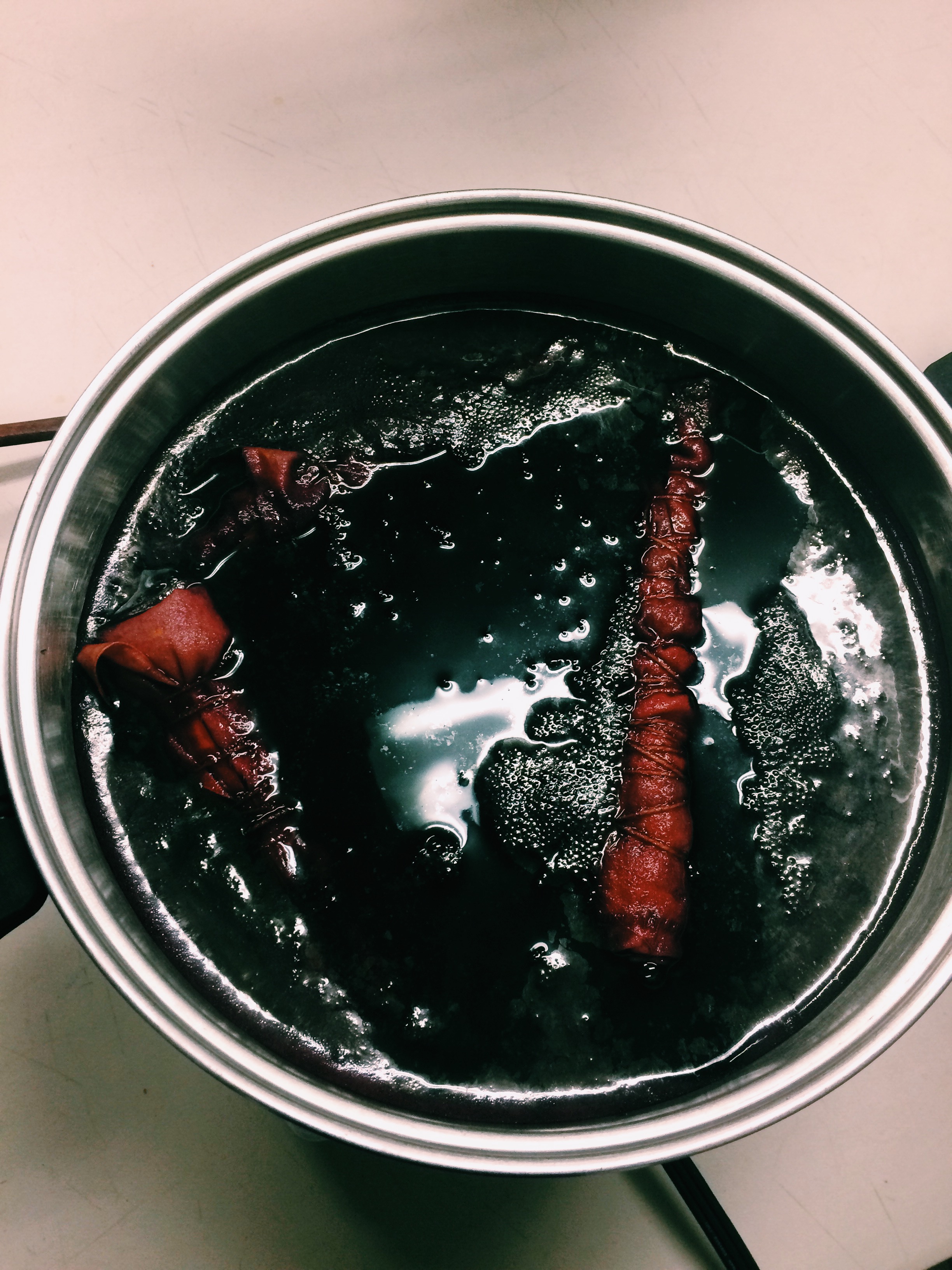
A Lesson in Dyeing
Danielle Moore
4 Feb, 2019 6:20 pm

So the first month of this little baby project has wrapped up and I’m feeling optimistic as ever. I am blown away by the people I’ve met as a result of seeking out some learning, the delicate and real conversations held concerning our future, and an overall willingness and excitedness to learn and adapt together.
One of these skill sharers is Ash Alberg, a local knitwear designer, natural dyer, and instructor of both. In fact, I met Ash by taking a natural dyeing workshop at the neighbourhood wool store. While I went into the workshop expecting to learn the dyeing process (which I will not reiterate here, but listen, you can even dye things with kitchen veg scraps), I came out with an armload of information about fibresheds, slow fashion, the intersectionality of environment and justice.
So before I dive into what a fibreshed is, here are some key (and life-applicable) lessons from dyeing with plants:
- There are only so many things you can control. You are bound to get different results with each session and each batch of plants. Even with meticulous measuring of pH and time, there are so many variables out of your control. Things like what minerals were in the soil when the plant was growing, how much rainfall it received, etc. etc. How liberating!
- Just because it’s natural doesn’t mean it’s necessarily “good” for the environment. If you’re buying natural dyes online, check to see who’s involved in the processing and harvesting of those plants. How transparent is the company with where they source their resources from?
- Be conscious when you harvest. For many folks who practice wild harvest as part of their culture, this comes as a no-brainer, but for those of us who have lost touch with the land, it’s a valuable lesson. Think: “what is the impact of what I am taking from this environment at this time?” For example, don’t harvest dandelions at the beginning of spring when they first start showing up because they’re the only source of food for bees. And then, when you do harvest something, make sure there’s a healthy population of it in the are, harvesting a maximum of a sixth of what is there.


Ash also runs a project called From Field to Skin, chronicling their adventures around the Canadian Fibreshed. Following more-or-less watershed regions, a fibershed is a geographical landscape that defines and gives boundaries to a natural textile resource base. Awareness of this bioregional designation engenders appreciation, connectivity, and sensitivity for the life-giving resources within our homelands.” A fibreshed region might include local fibre farmers (wool, cotton, dyeing flower farms), mills and micro mills for processing on a much larger scale than what I managed to do the other day, and designers and artisans.
I wondered why this was my first time hearing this term. I’ve been aware of the concept of fast fashion, but I hadn’t really considered the whole life cycle behind clothing. Reflecting on it more, I wonder how the “eat local” movement has really been at the forefront of certain environmental groups, whereas “wear local” has been left out. After working on a farm two summers ago, I really learned the effort that goes into producing and cultivating the food that I get to eat. Being connected to the land has shifted my connection to what I buy to eat. Perhaps I just hadn’t made a similar connection with clothing. It all has to come from somewhere.
Buying locally means products don’t need to travel as far, consuming less fossil fuel. Fast fashion has placed pressure on the global fibre/textile industry to produce at a pace that exploits people, water, soil, and landfill. With this in mind, Ash also reinforced the notion that “nothing is a simple decision”. We live in a complex world, each with our own life experiences. I struggle with the environmental movement when it does not keep people and communities in mind. Putting blame on consumers and guilting them into making “eco-friendly” consumer choices isn’t going to save the planet. What we can do is learn as much as we can about the products in our lives, and make informed decisions based on our circumstances. Our decisions should all vary, therefore, because we are all different people, living in different places, living in different communities, in different bodies.
Like my new friend, Diane, whom I met through the natural dyeing workshop put it, “it’s not that we take, it’s how we take.”
xoxo
The Cautious Optimist
